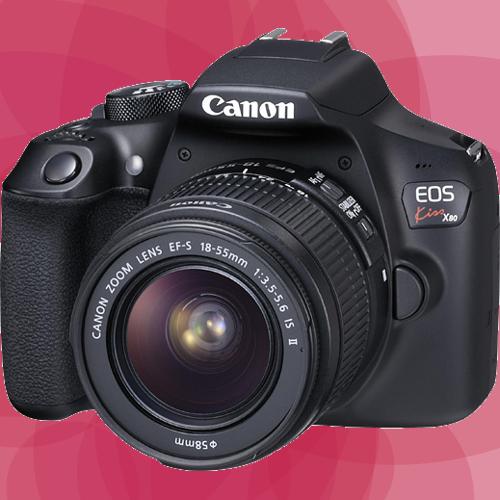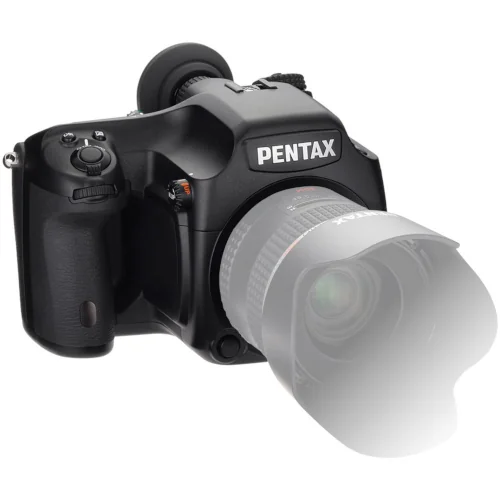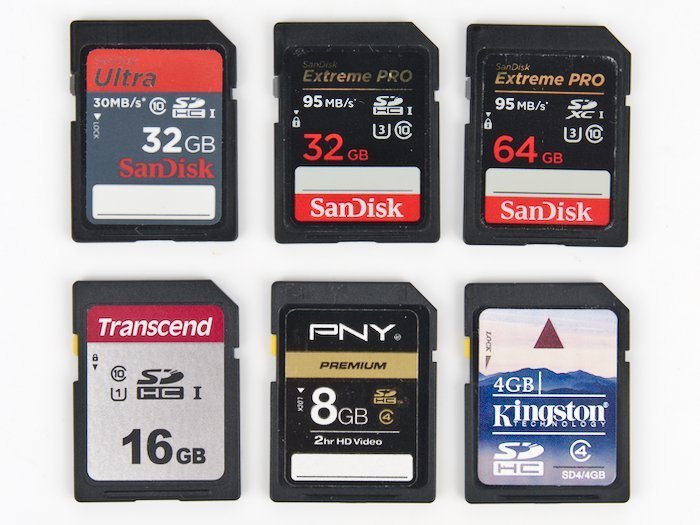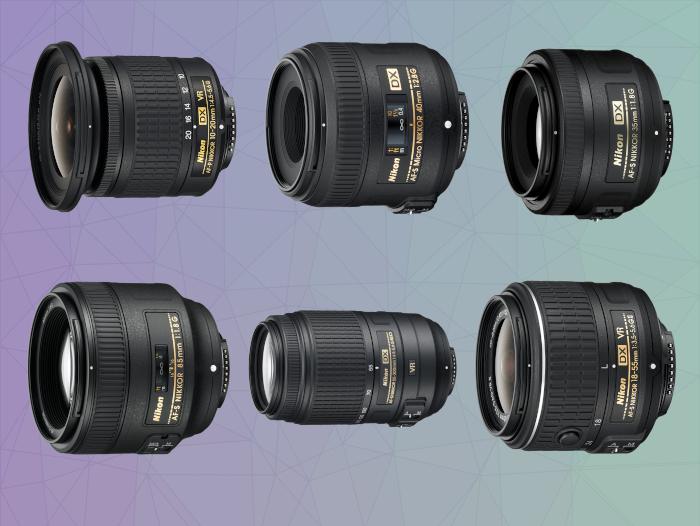
A Look at the Best Nikon D5300 Lenses for Photographers on a Budget
- Nathaniel Stephan
- Nikon d5300
- October 19, 2022
Table of Contents
The Nikon D5300 uses Nikon F-mount lenses. However, not all F-mount lenses are compatible with the D5300 as there have been many revisions and changes to the F-mount since its introduction in 1959.
Affiliate Advertising Disclosure
Outside the Shot is a participant in the Amazon Services LLC Associates Program, an affiliate advertising program designed to provide a means for sites to earn advertising fees by advertising and linking to Amazon.com.
As an eBay Partner, I may be compensated if you make a purchase. I also participate in affiliate advertising programs with KEH and Adorama. More can be found on the Affiliate Disclosure page.
Compatible Lenses
Nikon F Mount
Nikon D5300 compatible lenses use the Nikon F-mount. Nikon has been using the F-mount since 1959. It was originally designed to be used with SLR film cameras.
There are different versions of the lens mount and lenses as it has been modified over time to work with DSLR cameras.
The first autofocus lenses depended on a focus motor built into camera bodies. The Nikon D5300 is one of the few Nikon APS-C digital SLR cameras to have a built-in focus motor. As a result, autofocus will work with early autofocus lenses. These are marked AF and AF-D. They are also sometimes referred to as D-series lenses.
The Nikon D5300 lens mount does not have a meter coupling ridge or EE servo coupling post. Light metering won’t work correctly for manual lenses without electrical contacts. AF lenses with physical aperture rings will likely need to be stopped down to their smallest aperture.
Focal Lengths
- Wide Angle - Captures a large angle of view of a scene. These have a short focal length.
- Standard - Has a field of view that looks "natural" when viewed by people. Any focal length between 35mm to 50mm.
- Telephoto - Lenses with a narrow field of view, good for subjects that are far away or small. Wildlife photos are a popular use for this type of focal length.
- Macro - Has the ability to take images close up to a subject at a 1:1 magnification ratio of subject to sensor size.
- Fisheye - Ultra wide-angle lenses that produce distorted circular images.
Zoom vs Prime
- Zoom - The focal length can be changed. The zoom range covered will be different, but brands are always trying to make better zoom ranges.
- Prime - Lenses with a fixed focal length. Usually, they have larger apertures than zoom lenses. Larger apertures are better for low light condition and creating blurry backgrounds with a telephoto lens. Better ones will have razor sharp image clarity.
Best Zoom Lenses for Nikon D5300
One of the most common alens is the Nikon 18-55mm f/3.5-5.6 G, which is one of the best lenses for the Nikon D5300. The 18-55mm is going to be excluded as it is already mounted on the camera.
Wide angle zoom lenses for the Nikon D5300 are included further down the page.
Telephoto zoom lenses are very good with the Nikon D5300 for wildlife, sports, portraits, action, or any subject that is far off.
Nikon 55-300mm f/4.5-5.6G ED VR
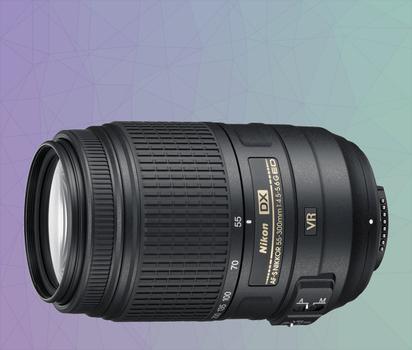
- Silent Wave Motor (SWM) for Fast and Quiet Autofocus
- Vibration Reduction Image Stabilization for Magnificent Handheld Shots
- Gives You a Massive Focal Length Coverage
- Terrific Focal Length for Action Photography with the Nikon D5300
See current price and more information on:
The primary appeal of the Nikon 55-300mm f/4.5-5.6G is the reach the lens has partnered with image stabilization. It will be an excellent option anytime you are not able to move closer to what you would like to take a picture of. Like other zooms mentioned, the aperture of f/5.6 at the far end of the zoom range is smaller than ideal, faster alternatives are much more.
You will not have to break your budget to get this piece of glass. There are many second-hand lenses available as it was offered with the Nikon D5600, D5500, and D3400 cameras.
In order to span the large zoom range, the lens is made up of 17 elements in 11 groups. Two of the elements are extra-low dispersion and one is a high refractive index element to ensure sharp images.
It weighs in at 580g (18.7 oz), with dimensions of (Diameter x Length) 3.0 in. (76.5 mm) x 4.8 in. (123 mm). While not small, it can still easily be carried around on the camera or in your bag.
Nikon 55-200mm f/4-5.6G ED IF AF-S DX VR
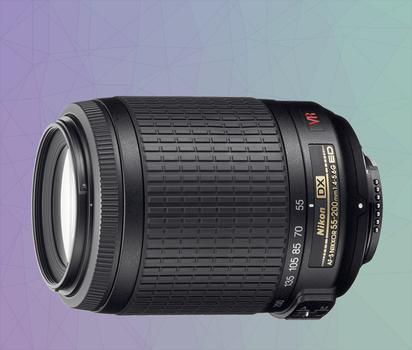
- Excellent Value When Purchased Second-hand
- Silent Wave Motor for Accurate Autofocus
- Excellent for Wildlife, Sports, Action, & Portraits
- 2 Extra-Low Dispersion (ED) Lens Elements
- (VR) Vibration Reduction Image Stabilization
See current price and more information on:
The Nikon 55-200mm f/4-5. 6G was regularly sold with the D3300, D3100, and D3200 digital cameras. It is a awesome deal when bought secondhand.
A copy in very good cosmetic condition can be found for less than half the price of a second hand Nikon 55-300mm.
The only downside of the 55-200mm is the 100mm reduction in reach. It still has VR image stabilization and to help you get sharp images when hand-holding the camera.
One positive thing about the lens is that carrying it around won’t be an issue. It only weighs 335g (11.8 oz) with dimensions of (Diameter x Length) 2.9 in. (73.6 mm) x 3.9 in. (99.5 mm).
Tamron 70-300mm f/4.0-5.6 Di LD
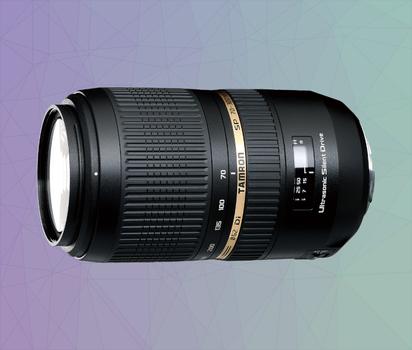
- Ultra Silent Drive (USD) Autofocus Motor
- Extra Low Dispersion (XLD) Glass Element
- Broad-Band Anti-Reflection (BBAR) Lens Coating
- 9 Aperture Blades for Beautiful Bokeh
- Minimal focus distance 59.1"
See current price and more information on:
The Tamron 70-300mm is an outstanding option if you want 300mm of reach, but don’t want to pay as much for the 55-300mm from Nikon.
One big disadvantage is that there is no image stabilization. This will make it difficult to get sharp images hand holding the lens.
Comparable optical image stabilization is included in the Tamron as found in the Nikons. All of them have extra-low dispersion elements and anti-reflective lens coatings.
The lens weighs 16.1oz (458g). It has a length of 5.6" and diameter of 3.2".
Recommended Wide Angle Lenses
A wide angle lens for the Nikon D5300 is very useful for landscapes, astrophotography, architecture, group photos, real estate photography, and more.
One thing to watch out for is the wide angle causing strong distortion. Portraits can be a problem as body parts such as a nose close to the lens will appear distorted.
An advantage of a wide angle is that image stabilization is less important. Little vibrations of movements are unlikely to cause blur in an image.
Having a big maximum aperture is vital for astrophotography. {For the best results, you want at least a f/4, if not f/2.8|To get the absolute best results, you want the maximum aperture to be a minimum of f/4.
Tokina 11-16mm f/2.8 AT-X116 Pro DX II
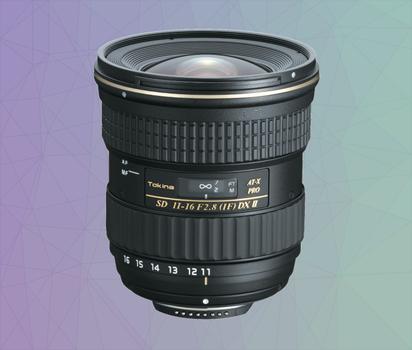
- Perfect selection for night photography
- Fast f/2.8 Maximum Aperture
- 77mm Front Filter Threads
- Focus Clutch Style M/A Selector
See current price and more information on:
The Tokina 11-16mm f/2.8 is fast and sharp. With a large aperture, this lens is an outstanding choice for astrophotography.
One key feature of the lens is the focus clutch that controls changing between manual focus and autofocus. To switch focus, the entire focus ring is either pushed forward or pulled back.
The built-in autofocus motor is noisy. This is often a big problem if you require quiet operation when shooting with your Nikon D5300 at an event.
The lens is rather large, weighing 550g (1.21 lbs) with dimensions of 4.02 x 4.02 x 4.02 in (L x W x H)
Watch out when you go to shop for the lens. Tokina also makes versions that use a different lens mount like the Canon EF or Sony A mounts. Double check to make sure the lens you get is compatible with Nikon.
Sigma 10-20mm f/3.5 EX DC HSM ELD SLD Aspherical
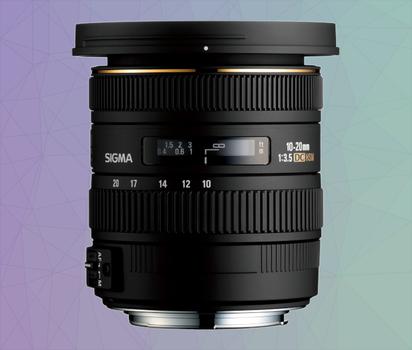
- Hyper-Sonic Motor (HSM)
- Ultra-wide angle lens
- Internal Focus and Great Build Quality
- Super Multi-Layer Coating
- Built with Aspherical Elements that Reduce Distortion
See current price and more information on:
The Sigma 10-20mm f/3.5 falls into the same price range as the Tokina 11-16mm f/2.8. It has a larger zoom range, but a slightly smaller maximum aperture. This is a great video lens for the Nikon D5300.
At 10mm the lens is going to produce an exaggerated distorted perspective. You’re likely going to see distortion, which you can reduce through post-processing.
4 aspherical elements have been utilised to help reduce distortion and aberrations. In total there are 13 lens elements in 10 groups to ensure the best image quality possible.
All that glass doesn’t make the lens too heavy, coming in at a weight of 520g (18.3 oz). Dimensions are diameter of 3.4" (87.3mm) and length of 3.5" (88.2mm).
Be careful if you are looking to purchase this lens. Sigma also made copies of the lens for other DSLR camera mounts including, Canon EF, Sony A, and Pentax K mounts. Make sure the one you buy uses the Nikon F lens mount.
Best Telephoto Lenses
The 55-300mm & 55-200mm lenses gone over in the zoom section are also the lenses to look for first if you need a telephoto lens for the Nikon D5300.
This section is going to take a look at telephoto prime lenses for sports, action, wildlife, and portrait photography. There is no shortage of these lenses available for the Nikon F-mount.
However, telephoto prime lenses tend to be expensive because the amount of optics that need to be implimented. The weight of the lens and ergonomics when mounted on a camera body need to be taken into account. The right lens the one that is easy to handle and use so you can capture memorable pictures.
Nikon AF-S Nikkor 85mm f/1.8G
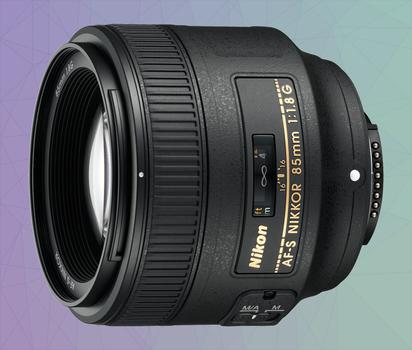
- Best Lens for Portraits
- Internal Focus (IF)
- Silent Wave Motor (SWM)
- Superb Color Reproduction
See current price and more information on:
The Nikon 85mm f/1.8G is one of the best Nikon lenses for professional photographers. It is a fast lens that delivers excellent images and pleasing bokeh.
The 85mm 1.8G is a full frame lens. You’ll notice two differences when comparing it against a DX lens.
First, full frame lenses are usually more expensive than DX lenses. They have larger lens elements, which translates to additional cost.
Second, the lens is larger than many DX lenses. While not a huge issue, if you plan to carry it around with another lens, you’ll definitely need a bag.
Nikon AF-S FX Nikkor 50mm f/1.8G
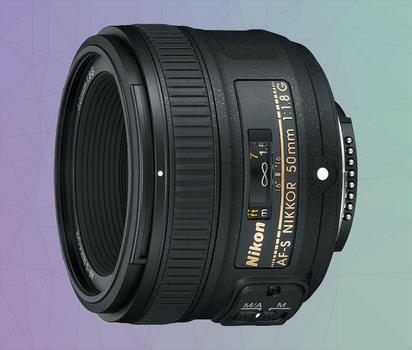
- Outstanding Lens with a Fast Aperture
- Silent Wave Motor (SWM)
- Small and Lightweight
- Excellent Pick for Low Light Photography
See current price and more information on:
Taking the crop factor focal length multiplier into account, this lens could be thought of as a short telephoto lens. It is an affordable fast prime that can be utilised for portraits and indoor photography.
The FX 50mm f/1.8G provides more reach than the DX 35mm f/1.8G, while still having a similar price.
There aren’t huge differences between the lenses. With the 50mm, you’ll get a bit more reach and blurring the background will be less challenging.
It weighs 185g (6.6 oz) and has dimensions of (Diameter x Length) 2.83" x 2.01".
Best First Prime
Nikon AF-S DX 35mm f/1.8G
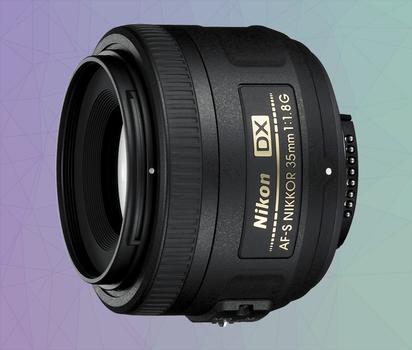
- Very Accurate Autofocus Performance
- Takes Outstanding Pictures in Difficult Lighting Situations
- Excellent Nikon D5300 lens for street photography
- High Build Quality
- Best option for an all around lens
See current price and more information on:
The Nikon AF-S DX 35mm f/1.8G is the best first prime lens to get for the Nikon D5300.
A maximum aperture of f/1.8, means you’ll be able to isolate your subjects and create beautiful bokeh. Indoors the lens is fast enough to where you will not need to use flash.
With a 35mm equivalent field of view of 52.5mm, you’ll have a “standard” field of view. Your photos will have a perspective that is similar to what is seen by human eyes.
Weighing just 200g (7oz), there’s never a reason not to have the lens with you. With dimensions of (Diameter x Length) 2.8 in. (70 mm) x 2.1 in. (52.5 mm), you can easily keep it in a coat pocket or bag.
Macro Lenses for the Nikon D5300
Macro photography starts with a reproduction ratio of 1:1. That 1:1 ratio can also be referred to as life size or 1X magnification.
Macro lenses for the Nikon D5300 allow the subject being photographed is the same size as the camera’s sensor. Popular subjects are insects, coins, flowers, copy work and academic subjects.
There are other ways to achieve macro magnification, such as extensions tubes. Personally, I find that a macro lens easier to use and gives better results. That’s because a macro lens has a large minimum focus distance.
As a quick note, Nikon branded their macros as Micro-Nikkor lenses. This is a constant source of confusion as micro and macro have opposite meanings.
Nikon Micro-Nikkor 40mm f/2.8G
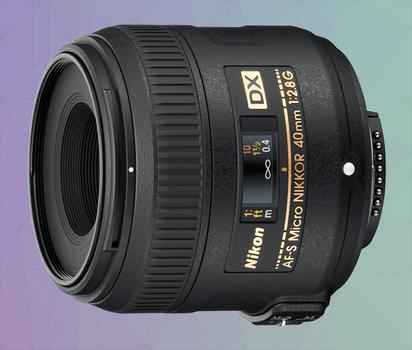
- Close-Range Correction System (CRC)
- Silent Wave Motor (SWM)
- Maximum Reproduction Ratio of 1X
- Well Built with a Rubber Sealing Mount Protects Against Dust and Moisture
- Excellent option for Close Ups
See current price and more information on:
The Nikon Micro-Nikkor 40mm f/2.8G is the best option for getting started with macro and close-up photography with the Nikon D5300.
As far as modern macro lenses go, the lens is relatively inexpensive. It also has a high-quality autofocus motor and uses current optics.
This means the lens can also be made use of for general photography. That’s not the case with older macros, as their image quality only becomes crisp after the aperture has been stopped down.
The lens weighs 235g (8.3 oz) with dimensions (diameter x length) of 2.7 in. (68.5 mm) x 2.5 in. (64.5 mm).
Nikon AF-S DX Micro Nikkor 85mm f/3.5G ED VR
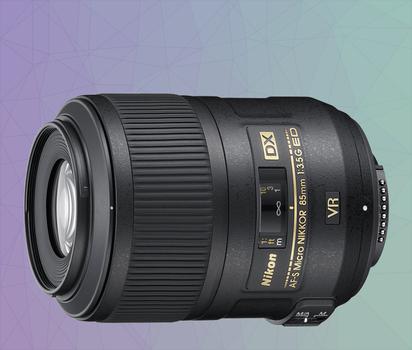
- Super Integrated Coating (SIC) to reduce Chromatic Aberration
- Maximum Reproduction Ratio of 1X
- Built with Internal Focus (IF)
- VR - Vibration Reduction Image Stabilization
See current price and more information on:
The main benefit of the 85mm macro lens over the 40mm is a longer working distance. That’s the distance from the front of the lens to the subject.
At 1X magnification, the front of the lens is going to be close to the subject. If you are trying to photograph an insect, this may cause them to try to get away.
Another issue could be properly lighting a subject. Depending on your light source it could be tedious to get it setup without the lens blocking it.
The downside is that a little more working distance adds to the cost of the lens.
While not the primary purpose of the lens, it can be used for portraits, but the f/3.5 maximum aperture might not create the best background bokeh.
Lens Selection Criteria
- Overall Image Quality
- Price to Performance
- Focal Length Range
Having a high-quality lens is of greater importance for image quality than an expensive camera. Lenses don’t wear out, you will be able to keep your lenses if you ever decide to upgrade your Nikon D5300.
That doesn’t mean that price is not a factor. It wouldn’t make sense to advise using thousand-dollar lenses, even if they are the best.
All the most commonly used focal lengths have been gone over.
Professional or niche lenses such as perspective control, macro, mirror, and fisheye lenses weren’t included. Those are high priced enough to justify a camera upgrade.
When to Upgrade Your Camera
The Nikon D5300 was released in 2005. It should be come as no surprise that there are many Nikon D5300 upgrade options available. One of the nice things is that you can still use the same lenses with a current camera, the bulk of with seamless compatibility.
Having access to different focal lengths, a fast prime, or a cutting edge lens will do more for you than a brand new camera. However, it is impossible to overlook the high resolution available from a more recent APS-C camera body as well as fast continuous shooting speed and more white balance options.
The price of a second hand Nikon D5300 replacement is a small fraction of the cost when the camera was brand new. That same drop in price also applies to recent camera models.
An upgrade that is a perfect match for your needs is likely more affordable than you would imagine if you are willing to sell your D5300 camera as soon as you have a replacement.
Nikon D5300 Kit Lens
The Nikkor 18-55mm f/3.5-5.6G ED AF-S DX VR was originally included with the Nikon D5300. This was most commonly included with used D5300’s for sale on eBay or Amazon.
It is one of several dx nikkor lenses that have been included together with cameras over the years. These make up the right lens choice for a majority of the expected needs of a Nikon D5300 owner.
In tough low light conditions using fill flash from the camera will help. Compatible lighting equipment like Nikon’s creative lighting system will be useful if you can find second-hand flashes that are inexpensive.
If you don’t have this lens, it is an excellent first pick for the camera. The focal length, image stabilization, and performance is solid, especially considering the low-cost of a pre-owned copy. The one undesirable aspect is the f/5.6 aperture at the long end.
